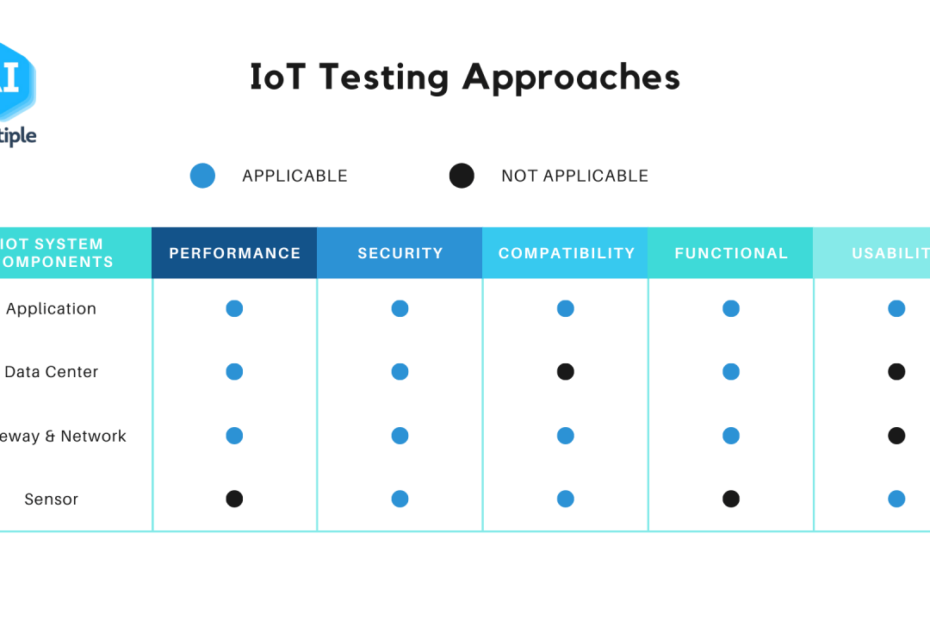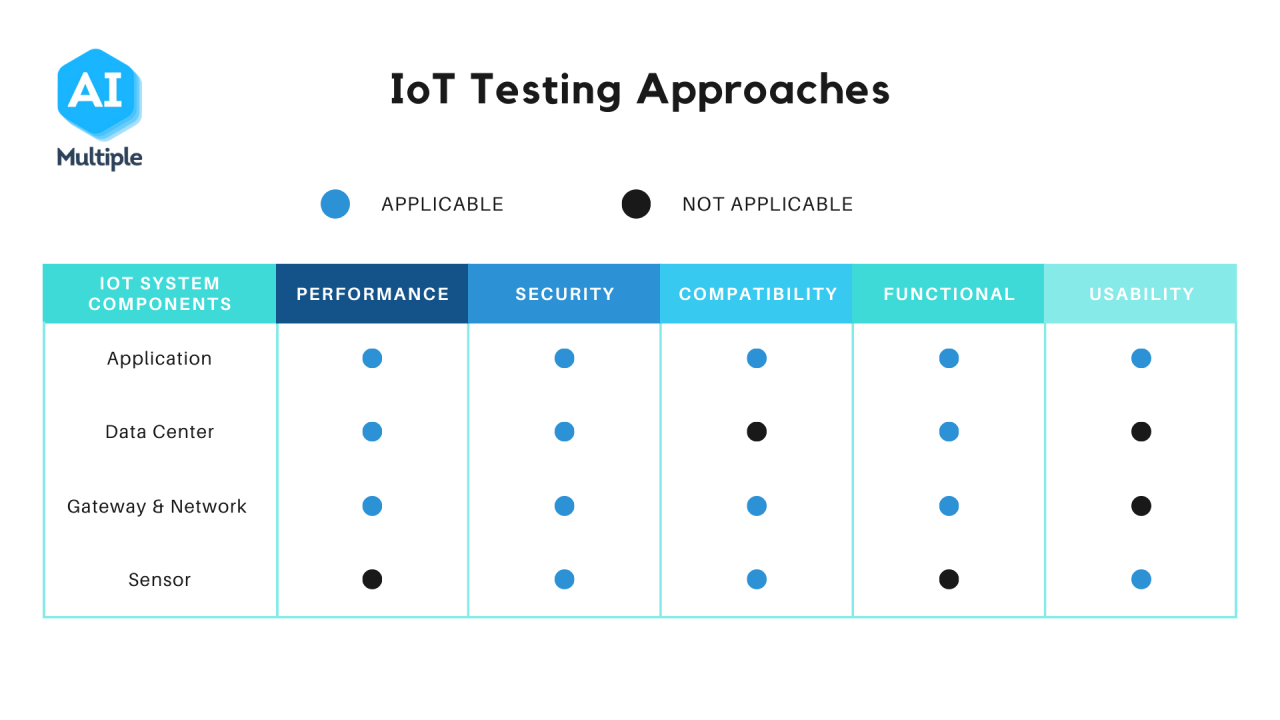The rapid proliferation of IoT (Internet of Things) devices and applications is transforming industries, but it also brings immense testing challenges. Validating the quality and reliability of connected IoT systems requires thorough testing across the entire ecosystem – including devices, gateways, networks, cloud platforms, and applications. However, traditional testing methods fall short in addressing the complexities of an interconnected IoT environment.
Recent research by Vanson Bourne found that enterprises spend over $10 billion annually just to recall defective IoT products. Proper IoT testing during development is the only way to avoid such huge costs of failure after deployment. This article provides a comprehensive guide to IoT testing and how businesses can build a robust methodology.
What is IoT Testing?
IoT testing refers to the practice of testing IoT devices, systems, and communication protocols to ensure correct functioning, interoperability, reliability, and security.
An IoT ecosystem comprises of four key components:
- Applications: Mobile or web apps providing user interfaces and experiences.
- Networks: Communication protocols like MQTT, CoAP connecting devices.
- Data Centers/Cloud: Backend infrastructure for processing and analytics.
- Devices/Sensors: Embedded systems collecting data and controlling actuators.
IoT testing aims to validate each component and their interactions through various methodologies. The goal is to have an end-to-end understanding of the entire connected system.
IoT Testing Approaches and Tools
Several testing approaches are required to fully validate an IoT system:
Performance Testing
This testing focuses on peak load capability, reliability, and resource usage of an IoT system. Specific aspects tested are:
-
Network Protocols – Tests throughput, latency, and stability of protocols like MQTT, CoAP under different load conditions. Tools like JMeter, Gatling, Locust can simulate IoT workloads.
-
Cloud and Backend – Validates scalability of backend processing, databases, analytics engines under expected load. Tools like LoadRunner, NeoLoad generate load for testing.
-
Embedded Software – Stresses computation performance in device operating system and processors using tools like Perf to find bottlenecks.
As per recent survey by Precisely, 92% of IoT developers consider performance testing important for IoT applications.
Security Testing
Validates the system against vulnerabilities like data leaks, malware attacks, unauthorized access, DoS attacks etc. It involves:
-
Device Security – Testing for risks like hard-coded passwords, encryption, firmware hacks using tools like Binwalk, Firmadyne.
-
Network Security – Testing VPNs, firewalls, TLS/SSL using tools like Nmap, Metasploit, to prevent threats like MITM attacks.
According to research by Palo Alto Networks, 84% of organizations have faced IoT security breaches, highlighting the need for robust security testing.
Compatibility Testing
Verifies seamless working across different hardware platforms like ARM, x86, operating systems like RTOS, Ubuntu, and software components. API testing tools like Postman and compatibility testing frameworks like Appium can accelerate this testing.
Functional Testing
Validates all functional use cases and business logic flows in an IoT system. Various techniques like boundary value analysis, equivalence partitioning are used to design test cases. Both blackbox and whitebox testing approaches apply here.
Usability Testing
Evaluates ease of use and simplicity of user interfaces for visualizing and controlling IoT systems. Feedback on UI/UX is collected from target users to identify areas of improvements.
Other Testing Types
-
Localization Testing – Validating localization and globalization aspects.
-
API Testing – Testing application programming interfaces with tools like Postman.
-
Interoperability Testing – Checking if interconnected devices and systems can operate seamlessly.
-
Compliance Testing – Validating regulatory standards like ISO 9001, IEC 62304.
-
Data Integrity Testing – Testing accuracy and consistency of data across the system.
Key Challenges in IoT Testing
Though testing is crucial for IoT deployments, it comes with multiple challenges:
Complex Use Cases and Real-Time Performance
IoT applications have complex real-time behavior with dynamic inputs across locations. Testing all possible scenarios is difficult. Defects can severely impact revenue and human lives.
Diverse Hardware and Software Platforms
Too many combinations of hardware platforms like ARM Cortex, MediaTek, operating systems like Contiki, RIOT, and diverse software libraries make complete testing very challenging.
Multiple Communication Protocols
There are diverse set of communication protocols – like MQTT, CoAP, XMPP, LWM2M etc. Testing interoperability between them consistently across devices with simulators like Eclipse Mosquitto is hard.
Resource Constrained Devices
Many IoT devices have constraints like low memory, compute power, battery life etc. Traditional testing tools may not work here and need customization.
Large-Scale Sensor Data
Potentially thousands of sensors produce enormous volume of test data. Validating sensor data at scale and identifying anomalies among signal noise is difficult.
Security Concerns
Connected systems are prone to new risks like data leaks, firmware hacks, DoS attacks etc. Testing for such vulnerabilities is very complex given large attack surfaces.
Lack of Testing Standards
Unlike software testing, there are no well-defined IoT specific testing standards yet. This makes defining the right test coverage difficult.
Role of Test Automation in IoT
While manual testing provides flexibility, test automation is imperative for IoT given the scale and complexity. Some key focus areas for automation:
-
API testing: Automated testing of device APIs using framework like REST-assured.
-
Performance Testing: Using tools like JMeter, Gatling for load generation and testing at scale.
-
Functional Testing: Auto-executing test cases across devices and simulators with Selenium, Appium etc.
-
Device Testing: Emulators like Android Emulator, Genymotion used for automated validation across devices.
-
Security Testing: OWASP ZAP, Burp Suite used for identifying vulnerabilities within IoT apps.
Real-World Examples of IoT System Testing
Here are two examples of comprehensive testing done for real-world IoT systems:
Smart Factory Monitoring and Control
Client: Automotive manufacturing company
Application: Monitoring of assembly line systems and machine telemetry
Testing Scope:
- Functional testing of edge systems and gateway software
- Performance testing and benchmarking
- Security testing for vulnerabilities
- Reliability testing with sensor simulation
- Automated regression testing
Outcomes:
- Improved assembly line efficiency by 12%
- 60% faster detection and debugging of any machine failures
- Hardened security measures for equipment access and data transfer
Smart Building Management Solution
Client: Real estate developer
Application: BMS and automation of lighting, HVAC, security systems
Scope:
- Interoperability testing for 30+ IoT hardware types
- Localization testing across 7 regional languages
- Accessibility testing for compliance standards
- Energy savings calculated through metering data accuracy tests
- Fault injection testing for reliability
Outcomes:
- Seamless integration with building equipment from multiple vendors
- Intuitive user experience for residents across locales
- Reduced events of false alarms and malfunctioning by 35%
- Accurate analytics for energy optimization
Choosing the Right IoT Testing Tools
With a wide variety of tools available, selecting the right ones based on the testing scope is important:
- Functional Testing: Selenium, Appium, Calabash, Espresso
- API Testing: Postman, REST Assured, Karate API
- Performance Testing: JMeter, Gatling, Locust
- Security Testing: Burp Suite, OWASP ZAP, Metasploit, Nmap
- Device Testing: Ranorex, TestProject, Kobiton, Experitest
- Monitoring: Prometheus, Grafana, AppDynamics
- Test Automation: Robot Framework, Cucumber
- CI/CD: Jenkins, AWS CodeBuild, CircleCI
Best Practices for IoT Testing
Based on our experience, here are some key best practices for effective IoT testing:
-
Start testing early during the development lifecycle for faster feedback
-
Implement continuous testing integrated with CI/CD pipelines
-
Test on real devices as far as possible to uncover hardware-related defects
-
Generate high test coverage across components using automation
-
Conduct security testing periodically to find vulnerabilities
-
Focus on interoperability and compatibility testing
-
Define metrics to measure test progress, coverage, and outcomes
-
Prioritize test cases wisely based on risk to maximize effectiveness
-
Analyze test reports to identify weak spots and enhance testing
The Road Ahead
As IoT adoption grows across industries, comprehensive testing practices are crucial for success. A holistic framework, intelligent automation, and the right set of tools will be key to overcoming IoT testing complexity.
With their experience and expertise in testing complex systems, independent software testing companies remain the best partners for enterprises to build robust IoT testing practice.
However, businesses also need to invest in training their own teams and building in-house capabilities. This will accelerate testing and validation for faster release of innovative IoT solutions.
Proactive planning, continuous improvement, and adoption of emerging technologies like AI for testing will shape the future of efficient and reliable IoT testing.

